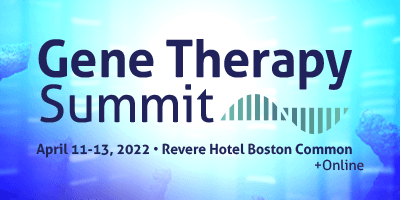The recent success of AAV-mediated gene delivery is giving rise to renewed interest and focus on vector engineering. Significant improvement in vector design, delivery and safety is needed to ensure continued success of gene therapies, particularly in increasing transduction efficiency, enhancing vector targeting and delivery accuracy, improving vector effectiveness, and avoiding the host immune response. CHI’s Vector Engineering & Delivery for Gene Therapies is a one-day digital summit bringing together scientists, engineers and clinicians from pharma, biotech and academia to share their work driving the exciting development of gene therapies from lab to clinic.
Tuesday, April 20
ENGINEERING & DESIGN OF NEXT-GENERATION VECTORS
Chairperson's Opening Remarks
Gene Therapy for Neuroscience
Between the tremendous unmet need and worldwide impact, neurological disorders could become the next beneficiary of the remarkable science and engineering being applied in gene therapy. Decades of biological research have unveiled the genetic cause of many debilitating diseases. Our goal is to translate that knowledge into potential one-time treatment options and curative therapies. Gene therapy as a therapeutic modality is continuing to evolve and we have seen important advances propelling the field forward. However, additional focused innovation is needed to overcome the complex challenges in delivery to the CNS.
Hindsight Is 2020: The Advancement of CpG-Depleted AAV Vectors as an Industry Standard
The desirability of CpG depletion of AAV vectors for the purpose of reducing the immune response to the vector and establishing long-term transgene expression is a hot topic of interest to many gene therapists. The presentation
will discuss the mechanism by which immunostimulatory CpG motifs limit transgene expression (presenting data from both preclinical and clinical studies) as well as strategies for the future design of AAV vectors.
Directed Evolution of AAV through in vivo Selection Yields Tissue-Specific Vectors, Enabling Clinical-Stage Ophthalmology and Cardiology Programs
Directed evolution, coupled with in vivo selection in primates, enables the systematic exploration of the AAV capsid fitness landscape, identifying gene therapy vectors with novel tissue tropism, preexisting neutralizing antibody resistance, and/or minimal liver tropism to reduce the risk of systemic toxicity. Here, we describe the selection and preclinical characterization of vectors that form the basis of gene therapeutics for ophthalmology, cardiology and lung disease indications.
Coated AAV Particles as a New Treatment Strategy for Duchenne Muscular Dystrophy
Duchenne muscular dystrophy is one of the most common muscular dystrophies caused by mutated forms of the dystrophin gene. Novel approximations are trying to treat these patients with gene therapy using viral vectors. We have coated AAV particles, increasing the transduction efficiency in the several muscle cell lines tested. Moreover, we show a decrease in the interaction with neutralizing antibodies opening the way to a repeated administration for systemic treatment.
Remember those times when you would bump into someone at a conference and strike up a conversation? Here we simulate such an environment where you can easily chat with an attendee or jump into a group conversation. Feel free to grab a lunch and join the conversations.
OPTIMIZING AND ACCELERATING DESIGN OF NEW VECTORS
High-Throughput Multiparametric Variant Screening toward in silico and Rational Design of AAV
AAV is establishing itself as a platform modality in drug development. The pharmacology of AAV is largely determined by the capsid which has been shown to influence safety and efficacy to a great extent. Engineering approaches of the AAV capsid have demonstrated great potential, however often have insufficiently robust to meet the requirements for drug development. Here, through large data approaches, AAV rational design approaches aim to overcome these challenges.
Effective and Accurate Gene Silencing by a Recombinant AAV-Compatible MicroRNA Scaffold
We identified an artificial miRNA scaffold derived from mouse miR-33 that shows equally effective gene silencing, reduces off-target activity by ten-fold, and produces fewer truncated genomes in comparison to conventional shRNA. In addition, the miR-33 scaffold can be expressed from inducible or tissue- or cell-type specific promoters. The miR-33 scaffold provides a valuable tool to effect on-target, potent silencing delivered via rAAV and other viral vectors for research and clinical applications. To facilitate the applications of miR-33 scaffold, we developed a user-friendly tool that enables investigators to easily design target cassettes that consider new miR-33 scaffold design rules.
Functional Interrogation of the Natural Repertoire of Adeno-Associated Viruses: Implications for the Design and Evaluation of Next-Generation Capsids
As the list of potential applications for AAV-mediated gene therapy grows, so does demand for capsids tailored to address new indications. Here, we comprehensively evaluate the tropisms of 118 naturally occurring and engineered
AAV capsids as a pooled library by multiple routes of administration into both male and female mice, as well as cynomolgus macaques. As such, we identified unique patterns of transduction based on tissue type, species,
and sex.
OVERCOMING DELIVERY CHALLENGES
The Innate Immune Response to Non-Viral Gene Delivery
Viral vectors for gene delivery are highly effective and commonly used, but they are also burdened by safety concerns, high costs, and inhibitory immune responses. Non-viral vehicles like cationic lipids and polymers are attractive alternatives, but typically less efficient. This seminar will discuss the use of mRNA-sequencing to identify host cell genes that may be responsible for inhibiting the delivery and/or expression of non-viral transgenes.
New Tools for Non-Viral CRISPR Gene Editing in Primary Human Immune Cells
Therapeutic CRISPR genome editing is currently limited by toxicity and efficiency. We have developed high-efficiency large gene insertions targeted by Cas9 in primary human immune cells. We found that anionic polymers stabilize
Cas9 RNPs into nanoparticles; adding truncated Cas9 target sequence (tCTS) at the ends of the HDRT further enhances nuclear import. Together these dramatically improve editing efficiency even at reduced HDRT doses yielding
marked increases in viable edited cells.
 3:30 pmEnhanced TcBuster
Allows Robust Delivery of Therapeutic Cargo in Primary Immune and Stem Cells
3:30 pmEnhanced TcBuster
Allows Robust Delivery of Therapeutic Cargo in Primary Immune and Stem CellsThe use of viral vectors for stable gene delivery is costly and time consuming. With the uptick in CAR-T and CAR-NK cell therapies there is an increasing need for non-viral solutions. We utilize TcBuster, a HAT family transposase. However, the initial performance of TcBuster in immune cells was undesirable. Through direct evolution, we engineered a hyperactive enzyme TcBuster that allows us to achieve favorable integration rates while using less plasmid DNA.
Delivering RNA to New Tissues by Testing Thousands of Nanoparticles in vivo Using DNA Barcodes
Lipid-based nanoparticles (LNPs) have emerged as a leading delivery system for nucleic acid therapies and have been used for clinically relevant delivery of RNA-based drugs. While these advances are exciting, systemic
delivery of LNP therapies to non-hepatocytes in vivo remains a challenge. This is in part due to the way LNPs are discovered. To address this need, we developed technologies to simultaneously quantify how thousands
of LNPs deliver in vivo.
Transient BBB Disruption to Potentiate AAV CNS Gene Therapy
The potential of systemic AAV9 gene delivery to treat neurological diseases has been demonstrated by transformative results in SMA patients and rapid approval of Zolgensma. However, large doses are required, and this success will be challenging to replicate in other neurological diseases as neuronal transduction in brain is modest. We have developed a transient BBB disruption that increases AAV9-mediated gene expression in CNS by two to three orders of magnitude.
A One-day Forum Bringing Together Vector Engineers and Scientists to Advance Gene Therapy.
As the world grabbles with the new normal, so are conferences and meetings striving to find new ways to connect scientists with continuing research and novel technologies.
CHI is proud to be a leader in developing the pathways that spark research innovations, and in connecting the people who drive them, by presenting real-time research and technologies, novel discoveries and best practices from industry front runners and biotherapeutics leaders.
Join your peers at this one-day virtual summit, where leaders in gene therapy gather to share insights and experiences on engineering of next generation vectors, vector optimization using in silico and rational design, viral and non-viral delivery challenges, and more!
Virtual Summit Session includes
Engineering & Design of Next-Generation Vectors
Optimizing and Accelerating Design of New Capsids
Delivery Challenges for Gene Therapy Products
2021 Featured Speakers

Junghae Suh, PhD
Biogen

Luk Vandenberghe, PhD
Harvard Medical School

Jonathan Melnick, PhD
4D Molecular Therapeutics

April Giles, PhD
REGENXBIO Inc.

David Nguyen, MD, PhD
University of California San Francisco
Corporate Sponsor
Explore Our Targeted Offerings to Maximize Your Experience
Get Comfortable and Engage from Anywhere
Benefits of a Virtual Event
- Our Virtual registration includes On-Demand access, allowing you to custom select your content
- Significant savings on travel, hotel, and reduced registration fees
- Secure a front-row seat for Keynote Presentations and Sponsored Talks
- Live Q&A sessions allow you to ask targeted questions
- Even after the event, access Archived Presentations for On-Demand Learning at your convenience

EXPAND YOUR REACH AS A SPONSOR
CHI offers sponsorships which will maximize your exposure before, during and after each event. We can help you achieve your goals by customizing a package that meets with your objectives and provide you with an integrated marketing program for the entire year. Opportunities include but are not limited to exhibits, presentations, branding, targeted delegate dinners and webinars utilizing our extensive database of over 800,000 Life Sciences professionals.


























